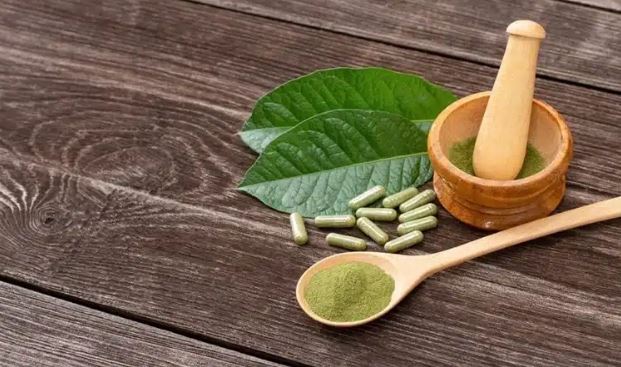Kratom Shelf Life: How To Extend Kratom Shelf Life?
Kratom, derived from the Mitragyna speciosa tree, has gained popularity for its potential benefits, making understanding kratom shelf life crucial for users. This article will delve into key aspects of kratom shelf life, including how long kratom typically lasts and strategies to extend its potency and safety.
We will explore effective storage solutions, discuss if and how kratom expires or loses potency, and identify the factors that influence its longevity. Additionally, we’ll address the safety of using kratom after its expiration date.
By the end of this article, you’ll have the essential knowledge to maintain the quality and effectiveness of your kratom from purchase to consumption.
Contents [hide]
What is the Shelf Life of Kratom?
Kratom shelf life is one of the key factors that matters a lot both to a consumer and to a merchant. It determines how long the substance is edible and safe. Normally, kratom can maintain its potency for a period of 1 to 3 years in storage if the latter is well carried out. The factors that affect the product’s shelf life are the processing methods and packaging arrangements before the consumer gets the kratom.
The freshness of leaves depends on how soon after plucking they are processed—the less time, the better. After processing, whether it’s coming out as powder, capsules, or extracts, storing kratom becomes crucial—the storage frameworks directly affect the shelf life of the product.
Abstracting from the effects of factors such as air, light, and moisture on degradation processes, speeding up the process of decomposition and, in some cases, developing of mold if the humidity is not controlled imposed. Sealed tightly with the stored ones, they can stay at their original quality for up to three years, which is an exceptional measure for those who are about to purchase in masses. Kratom edibles Nevertheless, timing has it that the leaves have begun to be plucked from the tree the instant along the chain of production, which pinpoints the virtue of freshness from the very beginning.
When consumed, kratom is believed to help with a wide range of ailments such as pain, stress, anxiety relief, addiction, and even depression. When kratom is administered orally, it is usually made into a tea.
Tips for Extend Kratom Shelf Life
Extending the shelf life of kratom not only ensures you get the most out of your purchase but also maintains its safety and efficacy. Here are some expert tips for keeping your kratom fresh longer:
Proper Storage Conditions:
The primary action to achieving the mentioned objective is preserving the best storage conditions. Accordingly, it would be best if you kept your kratom in a place that is regular temperature and humidity-regulated to stop the product’s worsening.
Avoid Exposure to Air and Light:
Two major factors threaten to degrade the quality of kratom. Oxygen can fasten the oxidizing process, making the alkaloids in kratom useless. A large amount of oxygen will weaken the potency of kratom.
Moreover, sunlight, particularly direct light, can also induce the breakdown of active (anti)-oxidant ingredients. The place where kratom is stored should not be in any of the computed elements.
Use Airtight Containers:
It is crucial to keep kratom in airtight containers to provide a barrier that limits air intake and guards the beneficial properties of the kratom. Wrapping food and products in glass or metal containers rather than plastic is better, as the product can sometimes interact with the plastic over long periods.
Keep Away from Moisture:
Moisture is a kratom arch-nemesis, an ally of mold and pathogens. Make sure that storage containers are moisture-free prior to packing kratom inside.
Store in a Cool, Dark Place:
Heat boosts the breakdown processes of many organic compounds, including Kratom. You can preserve the quality of kratom by keeping it in a cool, dark place, like a cabinet or a drawer, separate from the heating sources. This will help to significantly extend the shelf life of kratom while at the same time slowing down the degrading process.
How To Store Kratom Properly?
The essential thing to determine the right way to store kratom for its potency, safety, and long-term preservation is to learn the environmental conditions that can turn down kratom and their mitigating methods. Here are the essential guidelines for storing kratom correctly:
The Container Selection: Use air-tight containers to store kratom without letting air or moisture access it. Regarding the containers, glass or metal is preferred as you cannot expect them to impart any odor or chemical to the kratom. Be sure to screw on the lid of the jar every time you are done.
Control the Environment: Store Kraton in a cool, dark location to stay fresh for a long time. It would be better to store such foodstuffs in cabinets or drawers that do not have a light source or provide enough heat from a heater, thereby preserving it for more days. Temperatures above and below the extremes, the hot and cold ones, can affect kratom this way, and its conservation is better done in a constant room-temperature environment.
Minimize Exposure to Air: Each opening you make exposes the kratom to air, exacerbating the degradation process. Simplify the process of opening and closing the container, and do not open it unnecessarily. If you use a large amount, consider dividing it into smaller amounts that can be used daily rather than taking one dosage.
Avoid Moisture: Moist air often produces mold and bacterial action. Check whether the storage place is dry. Another problem regarding moisture-causing mold is what can be done about it. The solution might be adding silica gel packets to the storage containers to soak excess water.
Does Kratom Expire?
Kratom, as with most plants, doesn’t have a sharp expiration date but may get to the point of rotting when aging occurs. But they can also go bad if kept for a certain period. The problem of whether kratom may be used or not depends on which mode of storage is used.
However, kratom, unlike food, goes bad. Rather, by the same means, food spoils. This means it becomes less predictable and effective over time, thus making its effects remain unknown.
The metabolism of kratom is primarily due to the breakdown of its main alkaloids, including mitragynine and 7-hydroxymitragynine. The active compounds in kratom are responsible for its desired effects, and their incomplete degradation can lead to the inadequacy of product efficacy.
Exposure to oxygen, light, heat, and moisture can modify the breakdown of lumber and speed up the degrading process. Mold is another example, which might stem from storage in a damp environment. Aside from a decline in quality, moldy kratom may also pose health risks.
But if these airtight containers are stored in a cool, dark, and dry place that is not exposed to heat and light, kratom can be preserved for extended periods. For optimum storage conditions, kratom’s potency can be retained for about a year to three years, which is what most long-term users find satisfying. According to the users, the stored kratom could be stable after this period, although its strength might continue to decrease after time gradually.
It’s necessary to have these cases inspected regularly to check for spoilage, such as moldiness or dampness, musty smell, or any visual deterioration of texture or color. If kratom is not fresh enough, it can cause health problems, and when doubt arises, you are better safe than sorry, so the product should be thrown away.
Does Kratom Lose Potency Over Time?
Kratom is the source of subtle and powerful effects, which are stimulating at one end of the spectrum and sedating at another based on the strain and dose. Similarly, like many herbal supplements, kratom does lose potency at some time, and factors like how it is stored also influence the process.
Kratom is rich in alkaloids, notably mitragynine, and 7-hydroxymitragynine, which are responsible for the herb producing psychoactive effects. The content of these alkaloids deteriorates if they are exposed to the typical factors responsible for environmental or climatic changes, such as air, light, or heat.
To start with, the oxidization process, seen in the phase of the exposure of kratom to oxygen, can totally reduce the alkaloids (the anti-inflammatory, anti-obesity, pain relief, and antioxidant properties), thus diminishing the product’s efficacy.
Also, the alkaloids of these plants can deteriorate quicker than usual when subjected to too much heat. When a kratom compound remains in a hot car or heat source like a hot car, its loss of potency will be accelerated. Intense ultraviolet rays or the shine of strong artificial light may also affect the alkaloid profile of the kratom plant.
Addressing these drawbacks and maintaining kratom’s production capability requires properly storing it in a cool, dry environment free of humidity and air. Packaging should be airtight, and openings should not be frequent. This can help keep particles structurally strong.
In a nutshell, kratom alkaloids do gradually lose their potency in the long term if not stored properly. Moreover, this degradation rate can be as slow as one would like with a careful method of storage. Such storage practices can be beneficial for sustaining kratom’s effectiveness even through a longer duration.
What Factors Affect the Shelf Life of Kratom?
Storage Conditions
The environment where kratom is stored significantly affects its longevity. Kratom should be kept in cool, stable temperature conditions. Fluctuations in temperature can lead to condensation and increased humidity, which might degrade the product faster. A consistent, cool environment helps maintain kratom’s chemical stability.
Exposure to Light
Certain light types, like UV light, can destroy or decompose quicker, like kratom alkaloids, the substances responsible for most of its effects. Sustained exposure to the sun’s heat can crack the alkaloids, making the final production ineffective. So, dark and opaque containers with light-resistant characteristics are the better option for kratom safekeeping as they prevent exposure to light.
Moisture Levels
On the other hand, moisture is the most destructive factor of all. The high humidity or direct contact with water that incorporates fungi and bacteria may result in kratom being indented and damaging to human health. The products should be kept in airtight bags and in a dry environment to stop moisture.
Oxygen Exposure
Oxygen exposure speeds up the kratom alkaloid oxidation process, resulting in lower potency and a faster degradation rate. Vacuum-sealed bags paired with lids that limit oxygen synthesis can prevent the decay of kratom’s alkaloid content.
Packaging Quality
Finally, the quality of packaging plays a critical role. High-quality, airtight packaging prevents air and moisture from entering and minimizes the risk of contamination and external odors that can affect the product’s purity and efficacy.
Is Kratom Safe to Use After It Expires?
It is determining if kratom is a safe supplement for users or not when its expiration becomes a question for the concerned users who are desirous of using a working product. Normally, kratom won’t have specific expiration dates like drugs or food items that have short shelf life; however, it is recommended to use kratom for no more than one to three years, which is dependably on storage conditions.
The concern about taking expired kratom isn’t often that it becomes toxic, but rather it has a weakened power and troubles with its effectiveness. Accumulatively, the natural organic compounds in kratom’s active alkaloids, namely mitragynine and 7-hydroxymitragynine, break down over time.
This natural breakdown process of kratom means that you may never reach the same therapeutic benefits, which will require higher dosages for the same results, and this is not recommended in any case.
Moreover, the safety of kratom past its prime largely depends on how it is stored. If kratom has been kept in conditions that prevent exposure to moisture, heat, light, and air, it will likely remain safe to use after the typical shelf life has passed, albeit less potent.
However, there are any signs of mold, unusual odors, or discoloration. In that case, it is best to discard the product as these can be indicators of contamination, which could pose health risks.
Conclusion
By the fact that identifying the kratom shelf life and how to preserve it is an important aspect of a person who is taking this medication to enhance the level of potency and effectiveness. We’ve pointed out the necessity of kratom preservation from light, air, and moisture and, therefore, using recommended packaging and the predictive effect controlling for the signs of degradation for the time being.
With the simple steps outlined above, users have a good chance of keeping their kratom uncompromised and safe, in which case they can be guaranteed optimal benefits with no harm.
By following these guidelines, users can ensure their kratom remains potent and safe, maximizing its benefits and safeguarding their health. Proper care and storage are not just about prolonging the life of kratom but also about optimizing its therapeutic potential and ensuring safety.
FAQs
What are the signs of spoiled kratom?
The spoiled kratom may have mold and differences in texture. Also, it might be characterized by smell, a musty smell, dampness, or discoloration. If you find these signs, converting the kratom is unsafe, and the effectiveness is hampered; therefore, discard the kratom immediately.
Is Kratom safe to store in the freezer?
Freezing kratom can be okay and may extend its shelf life as the active compounds are slowed down from oxidation and moisture. Make sure it is packed into an airtight, moisture-proof container to avoid rimes and freezer burn.
How Often Can You Take Kratom?
The frequency of kratom consumption varies depending on individual tolerance and intended effects. Generally, it’s advisable to limit usage to no more than once or twice a week to avoid tolerance buildup and potential dependence.
Can I consume Kratom after its expiration date?
As long as there are no indications of any spoilage and kratom has been kept under the appropriate storage conditions, its use post its expiration date will generally be considered safe. It may not be as powerful as the kratom straight from the source. You will only get the certain affects you want.
Can be expired kratom be harmful?
Expired kratom would likely not be harmful so long as it has been stored properly and is in good condition when it comes to odorlessness and no mold growth or molding. Although fresh-smelling and well-looking kratom is safe, consuming any that appears off or has an odd smell is risking to do so.
Does kratom help with pain?
Yes, kratom is widely used for relieving pain. It is made from the alkaloids, including mitragynine and 7-hydroxymitragynine, both of which are assigned to the group of anesthetics. These alkaloids produce an analgesic effect by reacting with opioid receptors in the brain.




